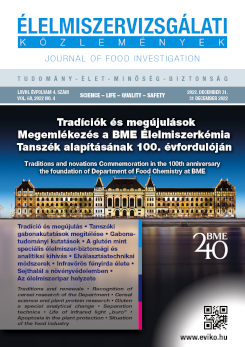Development of separation techniques for complex characterization of plant proteins and carbohydrates
Main Article Content
Abstract
In the Research Group of Cereal Science and Food Quality at the Department of Applied Biotechnology and Food Science of BME, separation technique has been part of the methods used for the complex quality assessment of food and food ingredients for a long time. Our colleagues working in our current and predecessor department achieved serious results with the help of their separation technique methods, for example in the analysis of protein and carbohydrate composition, analysis of lipids (fatty acids), quantitative and qualitative evaluation of biogenic amines and amino acids, etc. In addition to determining the composition of the raw material, the impact of different molecules on quality and technological properties was always an important question. It was always possible to investigate this using the modern tools and methods of the time, so the application of gel chromatography, high-performance liquid chromatography, gas chromatography and electrophoretic techniques determined the quality of both research and education. In recent years, the research group has mainly dealt with the quality of grains, their composition, their technological potential and their evaluation from a food safety aspect. For the research of these areas, molecular level (mainly protein and fibre composition) examinations have become essential, for which modern electrophoretic and chromatographic methods are excellent tools. However, their proper application is a great challenge, because in most cases, serious method development and/or method adaptation and partial validation tasks are required for their routine use. In the following, we provide a brief overview of the projects and results achieved in our research group in the field of separation techniques through a few application examples.

